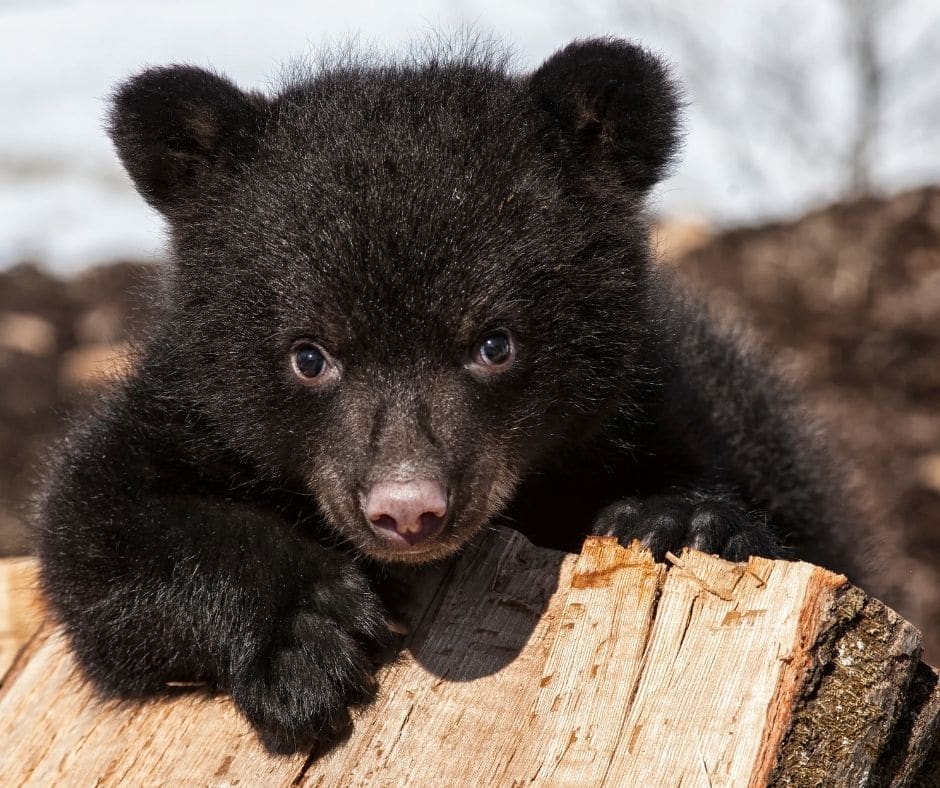All About the Black Bear
The Black Bear, or Ursus americanus, is the most common of bears living in North America. It’s no wonder they are additionally referred to as American Bears.
They also happen to be the smallest of the three bear species in our country. But don’t let that fool you.
Black Bears are some of the most unique and skilled animals that you will learn about- or perhaps one day, encounter.
Here on this Wildlife ID page from Covenant Wildlife Removal, you’ll learn everything there is to know about the Black Bear.
Facts About Black Bears
Most people admire the cuddly Black Bear, and not for no reason. An editor for BBC Wildlife Magazine, Sarah McPherson, says, “One of our favorite black bear facts is that one adult is believed to have swum nine miles along the Gulf of Mexico.”
Can you believe it?
Continue reading to learn more about these amazing animals.

Appearance
Black Bears are covered in a shaggy black coat. However, despite their name, their coats can also be dark brown, red-brown, or yellow-brown. They are born with blue eyes that turn brown in adulthood. Depending on the individual, a single Black Bear weighs about 200 pounds on average and is roughly five feet long from head to toe.
The head of a Black Bear is relatively small, with little eyes and rounded ears. Their snouts are brown, long, and lighter in color than the rest of their coat.
Males are usually larger than female Black Bears.
Habitat
Black Bears dwell in the forested areas of Canada, the United States, and Mexico. Their range will depend on the abundance of food in their habitat. For example, a male Black Bear’s home ranges from 15 to 75 square miles in the US. Although, females have significantly smaller ranges.
A suitable environment for the Black Bear consists of thick forest, a nearby water source, and plenty of nuts, fruits, and berries to eat.
Diet
Like humans, Black Bears are omnivores. They consume mainly vegetation but occasionally eat small fish and mammals, insects, and even deceased animals. Unfortunately, Black Bears living close to people and cities also dig through trash to find nutrients.
Some of the Black Bear’s main meals consist of the following:
- Nuts and seeds
- Berries and fruits
- Herbs
- Various grasses and roots
- Honey

Behavior
Black Bears are considered not to be nocturnal, except for in unique cases. Some Black Bears are mainly active at night to avoid interaction with humans. This only occurs when the bear lives nearby human settlements.
Otherwise, Black bears are active during the day. The word “active” is used loosely in this context. For, the Black Bear will wake and start its day just before sunrise. Searching for food and navigating the forest must be hard work because they will commonly take a nap or two before settling down for the night, a couple of hours before sunset.
You’ll most likely spot a Black Bear alone in the wild because they are solitary animals. However, they are seen in groups during mating season or if a mother is with her cubs. Additionally, you may find a gathering of Black Bears feeding in a large area abundant with food.

Hibernation
Black bears spend the winter in dormancy. In other words, the bear sleeps its way through the harsh weather that the season brings. Before hibernation, the Black Bear will consume significantly more food in preparation for the long weeks hidden away in its den.
When most people imagine a sleeping winter bear, they visualize it inside a dark and cozy cave. But Black Bears will hibernate in several different locations. For example, they may spend the winter in rock crevices, underground burrows, inside hollow trees, or even on the open forest floor.
Other Unique Behaviors
Check out these additional facts about the incredible behaviors of the Black Bear:
- Because of their grippy claws, Black Bears are skilled climbers. Cubs, especially enjoy climbing high into the branches of trees.
- On average, most Black Bears live to about 18 years old. However, the record stands at 39 years in the wild. In captivity, the oldest bear on record was 44 years old.
- Although most won’t have the endurance to keep it up, a Black Bear can run up to 30 miles per hour.
Have You Spotted a Black Bear in Your Backyard?
If you’ve encountered a Black Bear in your yard or perhaps while enjoying the outdoors, the most important thing to do is ensure your safety.
When you’ve crossed paths with a Back Bear, take the following actions to safely create distance between you and the bear without alarming it:
- Stop and slowly move away without turning your back to the bear.
- Do not run or make sudden movements.
- Make yourself appear larger to the bear by stretching your arms over your head.
Additionally, Black Bears are known for their mock-charges. If the Black Bear you have encountered suddenly moves towards you, shout as loud as you can to intimidate the bear.
Once it is safe to do so, call your local wildlife removal company. Covenant Wildlife Removal takes these matters very seriously. You can count on us.
Every day we remove nests, pests, and critters of all sorts from Georgia homes. There is just about nothing we have not seen or removed. And if the animal is protected, we can relocate the critter to a shelter or state-approved area for rehabilitation and relocation.
Reach out to us right away if you’ve spotted Black Bears on your property. Or click here for a free inspection with our expert team of wildlife removal specialists.

